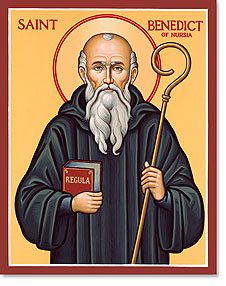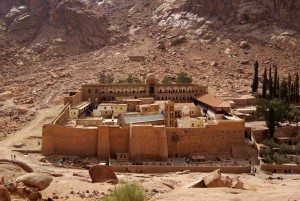Week 13: Tuesday, January 26, 2016
Monasteries
In the seventy-plus years between the last Roman Emperor (476 AD) and the death of Benedict (547 AD), Western Europe created a whole new version of Christianity: monastic Christianity. Born in the years of massive social unrest and political collapse, the new monastic life as it came to be lived in Italy under the leadership of Benedict, appealed to both men and women, rich and poor, young and old. It offered people the opportunity to withdraw from the confusion and to move into a safe space and to join a community of like-minded individuals who welcomed the simplicity of monastic life. The single most important individual in the creation of this new way of life was Benedict of Nursia. We met Benedict in Fall Quarter, and now we want to turn to some of the other great monastic houses that became the most important centers of cultural preservation in all of Europe and especially those in Italy. All these houses can be visited today.
- Monte Cassino, founded 529 (Benedict)
- Lerins, France, founded 410.
- Fulda, Germany, founded 744 by disciple of Boniface.
- Cluny, Burgundy, France, founded 910 (Benedictine)
- Camaldoli, Casentino Italy, founded 1012 by Saint Romuald (Benedictine)
- Vallombrosa, Appenine mountains near Florence, founded 1038 by Florentine nobleman.
PART TWO: Visits to some monasteries.
Saint Catherine’s Monastery in Sinai, Egypt is one of the oldest monasteries in the world and was begun in 548 AD. It has been in continuous operation since that date and therefore is one of the oldest continuously occupied monasteries in the world. Its official name being Sacred Monastery of the God-Trodden Mount Sinai, lies on the Sinai Peninsula, at the mouth of a gorge at the foot of Mount Sinai, in the city of Saint Catherine in Egypt’s South Sinai Governorate.

